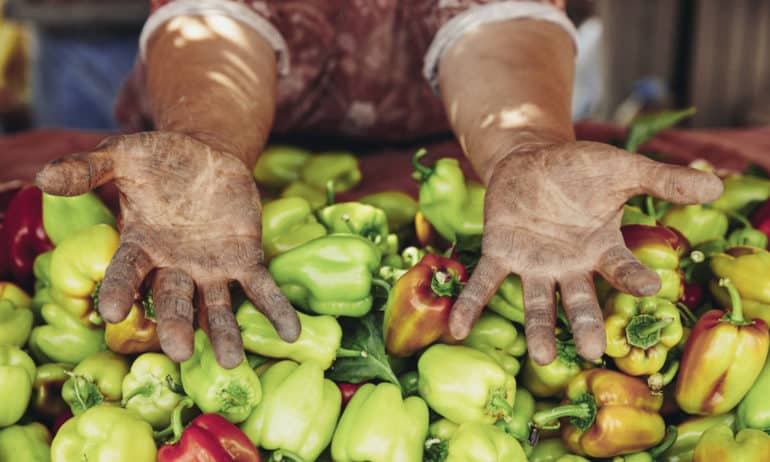December 29th marks 100 days since Hurricane Maria made landfall in Puerto Rico. Today, the island imports 95 percent of its food. As a major disaster aid package progresses—slowly—through Congress, it’s time to prioritize the island’s right to food security.
Carlos Flores Ortega, Puerto Rico’s Secretary of Agriculture, recently said, “This is a learning lesson; not all is bad.” He explains farmers now know which crops and buildings can survive a Category 5 hurricane.
Before the storm, Puerto Ricans imported about 85 percent of their food. Food cost twice as much as it did in Florida, its nearest mainland neighbor, despite a per capita income close to half that of Mississippi, the poorest of all 50 states.
Today, Puerto Rico’s farmers stand at a crossroads. Between Hurricanes Irma and Maria, the island’s agricultural sector has been stripped to its roots. Farmers watched the storms flatten 80 percent of their crop value while their topsoil washed by the ton into the ocean.
Because there is virtually no agricultural sector left to survey, the U.S. Department of Agriculture (USDA) postponed its scheduled agricultural census of the island for one year until December 2018. Puerto Rico’s farmers are resilient. Flores Ortega believes agriculture “will be the first economic sector in Puerto Rico that can stand again.” But this postponement gives us a narrow and unprecedented window in which to support Puerto Rico’s farmers in building a local and regional food system that supports the island and is an example for the Caribbean.
Seventy years ago, the mainland U.S. decided Puerto Rico wouldn’t feed itself. Congress launched Operation Bootstrap in 1947 to replace Puerto Rico’s agricultural economy wholesale with light manufacturing, tourism, and services. They created tax breaks in the 1970s, known as Section 936, to incentivize further targeted investment in these sectors.
Unable to cast their 3.4 million votes for President, or for even nominal representation in Congress, Puerto Ricans have had little say about policy. After more than a century of dictated fiscal policy, close to half of Puerto Ricans still live under the U.S. poverty line, with per capita incomes below USD$11,688, according to the U.S. Census Bureau.
Four years ago, Puerto Rico’s government began an ambitious bid to usher in a new era of investment in the island’s farms. They installed numerous new incentives: farm supplies were exempted from sales and use taxes, up to 40 percent of the sticker prices of farm vehicles were subsidized, and half of the cost of tractors could be reimbursed. Almost 2,000 new farms were established. As recently as March, NBC was running headlines stating, “Puerto Rico Experiences an Agricultural Renaissance.” Puerto-Rican American politicians like Rep. Darren Soto (D-FL.) were working on a roadmap for Congress to support the trend.
There is a body of research by agroecologist Miguel Altieri that asserts that resiliency to extreme climatic events in Latin America is closely linked to the diversity and size of a farm’s operations. Surveys after hurricanes in Cuba, Chiapas, Nicaragua, and Honduras have shown that diversified, small-scale farms suffer less damage than bigger farms practicing conventional agriculture.
One hundred days out, national crop insurance is starting to kick in. The USDA reports that only USD$22 million worth of crop value was insured in Puerto Rico, while Flores Ortega reports that the total losses are at least ten times that amount. Though crop insurance is an important policy mechanism, those farms that do maintain insurance policies are often the largest farms growing a small number of commodity crops.
Already, the USDA has found USD$11 million to free up in its conservation programs, along with USD$12 million to prop up the island’s dairy industry. But Flores Ortega estimates Puerto Rico’s losses at USD$780 million of agricultural products and billions of dollars worth of the rural infrastructure that it depends on.
Puerto Rico had good reasons to want an agricultural and food system revolution before Maria—and now, they have good reasons and urgency for that transformation to take place. Let’s help them do it.











